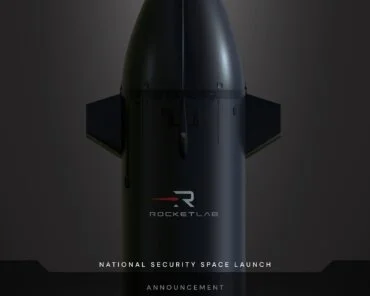
US Space Force Bolsters Missile Defense with Northrop Grumman & SciTec Contracts
The US Space Force (USSF) is taking significant steps to modernize its missile warning and defense capabilities. Recent contract awards to Northrop Grumman and SciTec signal a major push toward a more resilient and advanced ground system infrastructure. These initiatives are designed to enhance the detection and tracking of missile launches and potential attacks, ensuring a decisive edge for warfighters.
Northrop Grumman has secured a $244 million deal to construct advanced relay ground stations in the US and UK. These stations will support the Next-Generation Overhead Persistent Infrared (Next-Gen OPIR) program, a critical component of the US's integrated missile warning architecture. These ground stations will feature a flexible, modular design, similar to the Relay Ground Station-Asia built in Guam in 2023, adapting to satellites' evolving bandwidth and resiliency needs.

Calvin Pennamon, director of operational exploitation systems at Northrop Grumman, emphasized the importance of "high performance, reliability, and mission flexibility" for the Next-Gen OPIR program. He added that their ground systems would "enhance communications between Space System Command’s legacy and future Space Based Infrared Systems, providing access to multiple constellations."
In a parallel effort, SciTec, a software specialist based in New Jersey, was awarded a $259 million contract to further develop a ground system for military missile-warning satellites under the Future Operationally Resilient Ground Evolution (FORGE) program. This contract aims to build a government-owned ground system for missile warning satellite command and control. SciTec will focus on creating an integrated enterprise between FORGE and non-FORGE systems.

The FORGE system is designed to support satellites across multiple orbits, providing continuous monitoring for missile launches and other potential threats. It is part of a broader modernization push, including investments in ground relay stations in the US and UK for the Next-Gen OPIR satellite network.
These contracts mark a significant step forward in modernizing the USSF's ground infrastructure. The improvements address the need for more robust networks, advanced information technology architecture, and enhanced command and control systems. Earlier initiatives include the greenlighting of operations for the Survivable Endurable Evolution (S2E2), a new ground system replacing the outdated Mobile Ground System from the 1960s.
The combined efforts of Northrop Grumman and SciTec, through the Next-Gen OPIR and FORGE programs, aim to create a more resilient and effective missile warning and defense system. These developments will not only enhance the US's ability to detect and respond to threats but also provide a crucial advantage in maintaining global security.
What are your thoughts on these advancements in missile defense technology? Share your perspective in the comments below.